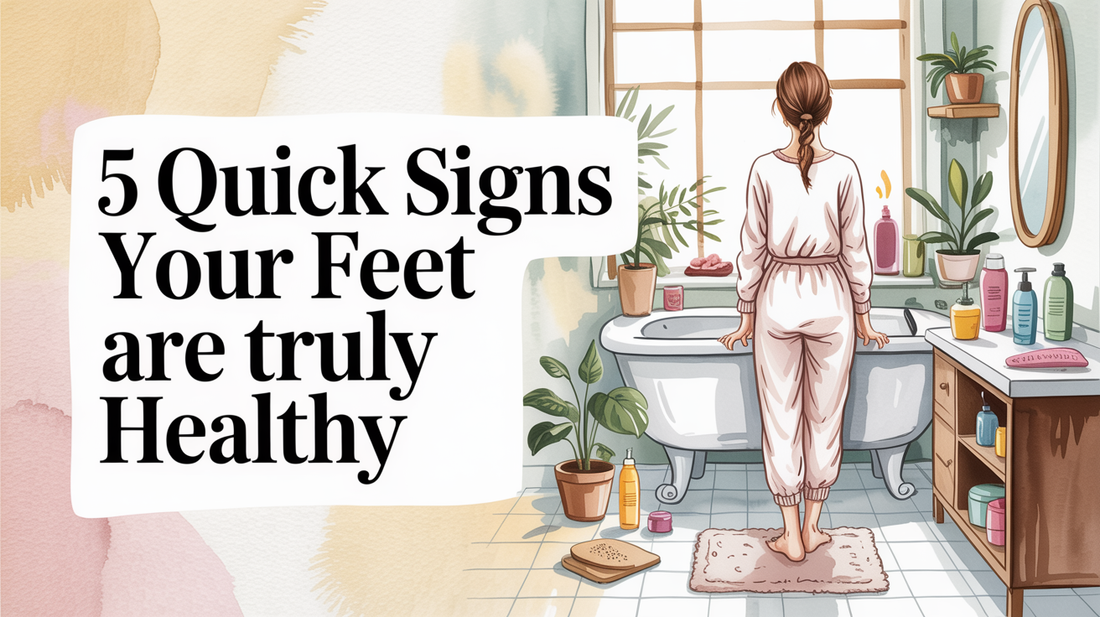How to tell if your feet are healthy
healthy feet signs, foot self-check, foot health checklist — Taking care of your feet is essential for overall well-being. This blog post will guide you through understanding healthy feet signs, performing a foot self-check, and following a practical foot health checklist. We’ll break it down into three clear sections, allowing you to take actionable steps for your foot health tonight.
Visual checkpoints 🧭
Visual inspection is the first step in assessing your foot health. Regular visual checks can help you spot early signs of potential issues before they develop into serious problems. Here are some key visual checkpoints to consider:
- Skin Color: Look for a normal pink or flesh tone, avoiding any blue, red, or pale discoloration.
- Nail Appearance: Ensure your nails are growing properly, without discoloration, ingrown edges, or signs of fungal infections.
- Skin Texture: Check for cuts, cracks, blisters, calluses, or unusual bumps that might indicate discomfort.
- Swelling: Be mindful of any puffiness around your ankles or the tops of your feet.
- Shape Changes: Observe any new bunions, hammertoes, or alterations in your foot's arch.
- Between Toes: Inspect for moisture, scaling, or signs of athlete's foot.
Try It Tonight: Calm, Fresh Feet ✨
- Wash your feet with warm water and a mild cleanser; make sure to dry thoroughly between your toes.
- Apply a small amount of Kissable Feet where needed; gently massage until fully absorbed.
- Let your skin breathe; consider slipping on breathable socks if desired. Remember to perform a patch test first if you're new to this foot cream.
Sensation & mobility tests ✨
Testing your foot's sensation and mobility can reveal important information about your nerve function, circulation, and joint flexibility. These simple self-assessments can give you valuable insights into your foot health:
- Touch Sensitivity Test: Use a light touch or cotton ball to check if you can feel gentle contact on all areas of your feet.
- Temperature Awareness: Test your ability to distinguish between warm and cool objects placed on different areas of your feet.
- Vibration Sense: Place a tuning fork or electric toothbrush on bony areas to assess your vibration detection ability.
- Range of Motion: Flex and point your toes, rotate your ankles, and bend your foot up and down to evaluate joint mobility.
- Balance Assessment: Stand on one foot for 30 seconds or walk heel-to-toe to test your stability and proprioception.
Why We Recommend a Gentle Helper 🌿
Kissable Feet is designed for quick absorption and a soothing, non-sting feel. This nurse-crafted blend of tea tree, coconut, and calendula supports comfort and a clean finish, making it a great addition to your nightly routine.
- Fast-absorbing comfort with a non-greasy finish.
- Gentle sensation suitable for sensitive, overworked feet.
- Clean, calming scent that’s perfect for bedtime.
When to see a podiatrist 🔍
Understanding when to seek professional podiatric care is vital for maintaining optimal foot health. Early intervention can prevent minor issues from escalating into major problems. Here’s when you should consider visiting a podiatrist:
- Persistent pain lasting more than a few days, especially if it worsens or disrupts your daily activities.
- Changes in sensation such as numbness, tingling, or burning, or a complete loss of feeling in any area of your foot.
- Visible deformities like new bunions, hammertoes, or sudden changes in your foot shape or arch height.
- Skin and nail issues including non-healing wounds, suspicious growths, severe ingrown nails, or recurring infections.
- Circulation concerns like persistent swelling, color changes, or wounds that heal slowly, which is especially important for diabetics.

